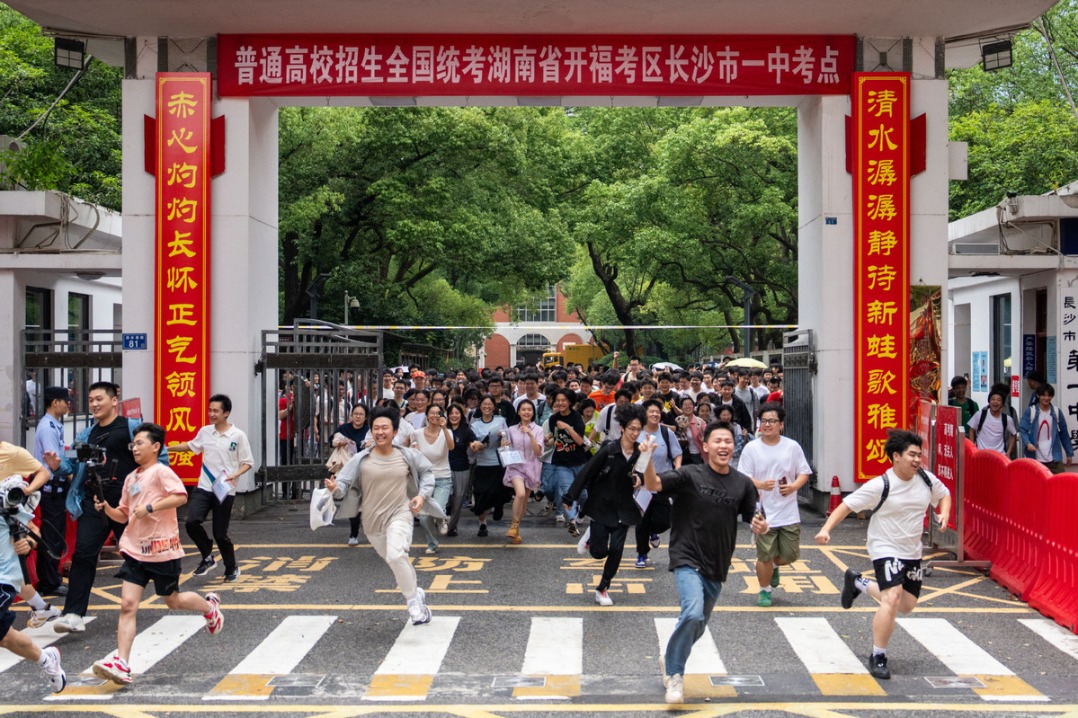Shandong implements China's first maglev heat pump system

China's first maglev heat pump system will officially start cooling services on Sunday at a community in Weifang, Shandong province.
Wang Weixiang, director of the low-carbon energy technology development department at the Fourth Prospecting of the Shandong Coal Geology Bureau, recently led technicians to inspect the system and initiate trial cooling operations for residential and office areas of the bureau.
To guarantee smooth summer cooling, they checked the pipeline system for leaks, replenished water pressure, and ensured the underground system was properly pressurized.
"We have developed a smart operation and energy-saving system, which covers not only the heat pumps but also terminal upgrades such as the installation of air handling units to efficiently save energy and ensure a comfortable temperature for the residents," Wang said.
On Monday afternoon, when the outdoor temperature in Weifang reached 36 degrees Celsius, the indoor temperature in the community remained at 23 C.
"The cooling performance of this unit is excellent," Wang said.
"We only open one air outlet to avoid excessive cooling," said Yang Ailian, a resident of Building 5 in the community.
"The heating effect in winter was also outstanding — we closed the bedroom vents, yet the room temperature stayed around 21 C," Yang said.
The system, jointly developed by the Shandong Bureau of Coal Geology and Shandong Tianrui Heavy Industry, has been installed in the community since last year and performed excellently during the heating season.
"Covering 27,000 square meters, the system saved 230,000 yuan ($32,013) in electricity costs compared to the traditional heating system," Wang said.
Before installation, Wang organized six technical review meetings to make sure the system was reliable.
"I had a lot of pressure because it's the first maglev heat pump system in China. I was not sure whether it would operate steadily," Wang said.
Utilizing advanced maglev technology, the heat pump minimizes mechanical friction, reduces power consumption by an average of 30 percent, and adjusts loads automatically to prevent energy waste. Additionally, it harnesses renewable energy sources like water and geothermal heat, producing no pollutants, according to Wang.
Amid China's efforts to reduce carbon emissions, experts predict maglev heat pumps and chillers will drive industrial upgrades with their efficiency, low noise, and smart features.
"The technological advancements in maglev heat pumps accelerate their use in smart buildings and industrial waste heat recovery projects," said Zheng Tiemin, general manager of Tianrui Heavy Industry.
With further innovation and commercialization, these systems will reshape the heating, ventilation, and air conditioning industry, Zheng said.
- Shandong implements China's first maglev heat pump system
- Over 14,000 students with disabilities complete gaokao with some help
- Youth returns to 'isolated' mountain village to run boutique B&B
- PLA officer rescues five people from drowning
- Chinese scientists pioneer efficient paraxylene production from CO2
- Chinese researchers develop high-efficiency flexible thermoelectric material for wearables





































